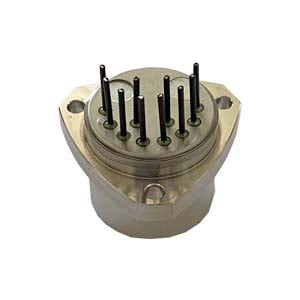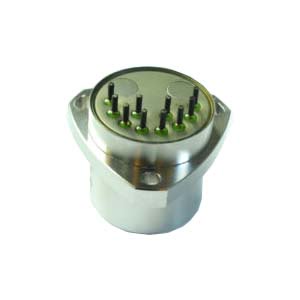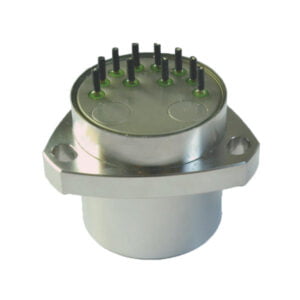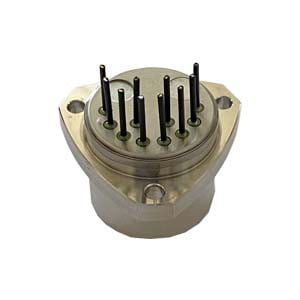Principle and structure
Quartz accelerometer is a kind of precision inertial sensor which can detect the acceleration by sensitive quartz pendulum relative position change. The speed and position of the system can be accurately obtained by calculation, and the accurate acceleration measurement signal can be provided for navigation, guidance, control and adjustment of various systems. The pendulum plate of the quartz accelerometer is formed by the quartz material after laser cutting, acid etching and other special processing, the thermal expansion coefficient is very small of ordinary glass 1/10~1/20, and the thickness of the flexible beam is 0.03mm. Quartz accelerometers are generally composed of quartz crystals, mass blocks and electrodes. The quartz crystal is used as the core component of the sensor, the mass block is used to sense the acceleration, and the electrode is used to measure the piezoelectric charge. Among them, the precision performance of quartz accelerometer products launched by ericco can reach the middle and high navigation level. ER-QA-03A is taken as an example, with bias repeatability of 10-50μg, scale factor repeatability of 15-50ppm, and Class II nonlinear repeatability of 10-30μg/g2.
MEMS accelerometers are also known as microelectromechanical systems (MEMS). An acceleration sensor is an embedded acceleration sensor that can measure the acceleration of an object in space. It can also be used to measure the linear acceleration and angular velocity of an object. The working principle of MEMS accelerometers is to detect the dynamic behavior of objects in space through one or more components in MEMS systems, which can be micro-capacitors, micro-oscillators, micro-mechanical switches, etc. When the object accelerates, the parameters of these elements change, so that the acceleration is detected and the acceleration is measured.
The structure of the MEMS accelerometer is basically composed of four parts: mass block, spring, induction circuit and package. Among them, the mass block is the core component used to sense the acceleration, the spring is used to support and constrain the movement of the mass block, the induction circuit is used to convert the mechanical displacement into an electrical signal, and the package is used to protect the structure and electronics of the MEMS accelerometer.
Application
Quartz accelerometer is widely used in aviation, inertial navigation platform and other fields ,because its long-term stability is superior to MEMS accelerometers, and it also has the characteristics of high precision, high stability and fast response. In the process of aircraft manufacturing, quartz accelerometers can be used to test the structural strength and flight characteristics of aircraft. In the flight mission, the quartz accelerometer can be used to measure the acceleration of the aircraft in different directions and transmitted to the flight control system for analysis and processing in real time. In addition, the quartz accelerometer can also be used for real-time measurement of aircraft attitude, gyroscope drift and vibration during flight. In addition to its small size, the ER-QA-03C quartz accelerometer designed for aviation inertial navigation systems can be used not only for aerospace inertial testing, but also for static and dynamic acceleration measurements.

MEMS accelerometer is widely used in various fields. In the field of mobile devices, MEMS accelerometers are used in navigation, attitude detection, image stabilization and so on. In the automotive field, MEMS accelerometers can be used for vehicle stability control, collision detection, etc. In the field of industrial control, MEMS accelerometers can be applied to vibration monitoring, robot navigation, etc. MEMS accelerometers are also often used with MEMS gyroscopes, and their design and processing technology has become increasingly mature. For example, ER-MA-5 has a bias stability (Allen variance) of 5 ug and a bias monthly repeatability of 200ug.
Advantages and disadvantages
The quartz accelerometer can stand out among many accelerometers, in addition to playing its own unique attributes, the important reason is that its long-term stability is better and its sensitivity is better. Its disadvantage is that the measurement range is limited by the stiffness and size of the vibration beam and other factors, the general measurement range is not more than tens of g, and it is vulnerable to stress damage in high acceleration environment.
MEMS accelerometers have many advantages, such as small size, light weight, low power consumption, and low price. In addition, MEMS accelerometers also have high sensitivity and large measurement range. However, MEMS accelerometers also have some shortcomings, such as large temperature drift, large noise, and unstable sensitivity.
Development trend
At present, quartz accelerometers and MEMS accelerometers still have a lot of room for development in terms of performance and application. With the continuous progress of technology, researchers are trying to solve the problems of accelerometer noise, temperature drift and so on, and constantly improve its sensitivity and stability.
More Technical Questions
1.Why do we Need Accelerometer?
2.What is the Purpose of the Accelerometer Senor?
3.What can you do with an Accelerometer?
4.What Effect Does Temperature Have on Quartz Flexible Accelerometer?
5.Multi-Dimensional Understanding of High Precision Quartz Accelerometer
6.How do parameters affect the performance of the quartz accelerometer?
Products in Article







